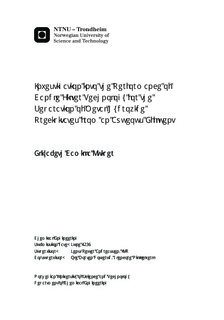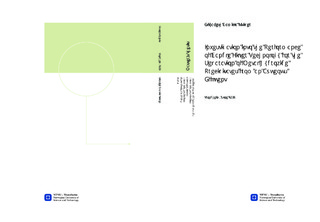| dc.description.abstract | The effluent treatment plant at Glencore Nikkelverk experiences the generation of liquid waste from various areas and processes in the plant. Being primarily a nickel refinery, but also producing copper and cobalt, the effluent contains significant concentrations of heavy metals. Such effluents are harmful to the environment. The effluent treatment plant thus operates to limit the discharge of harmful elements from the plant to the effluent, to allow the plant to comply to discharge limits set by authorities and to recover valuable elements from effluents for reprocessing. This is currently performed by means of metal hydroxide precipitation followed by solid-liquid separation.
The solid-liquid separation is carried out by manual chamber filter presses that require heavy manual labour and have thus been classified as a health hazard by the health, safety and environment department. An investigation is therefore done to assess the suitability of DrM Fundabac candle filters as an alternative filtration technology by use of a DrM Fundabac pilot filter rig. The investigation analyses filtration performance while also exploring variations in general filtration behaviour. This is done by carrying out initial filter cloth screening tests in the laboratory to choose a suitable range of filter cloths for further testing. Filtration tests are then performed on the pilot filter, employing the chosen filter cloths. Operating parameters including filtration time, applied pressure and feed flowrate are evaluated. The feed to the filter varies continually and cannot be controlled. It is thus investigated how variations in feed affect variations in filtration in order to understand why filtration performance can change. Samples from the feed slurry, filtrate and filter cake are taken and analysed. Measurements from online data systems are recorded. These enable an overview of some of the primary particle properties, the state of the system and the secondary properties that together govern filtration.
The study shows that the pilot filter operates effectively and through the use of either the DrM N 11 U 030 or Markert PPV 2737 filter cloth, good filter cake release and production of filtrate of equal clarity to that of the currently employed filter presses is enabled. For optimal throughput of filtrate and good cloth-cake adhesion during filtration, the filtration time should be set to at least 40 minutes and the applied pressure to 4 bar. An increase in the pH in the range of 9 to 10 during the precipitation process is beneficial for filtration as it results in a higher concentration of solids in the feed to the filter. Both an increase in the solution pH and an increase in the feed solids concentration result in a decreased specific cake resistance and decreased filter cake moisture content. An increase in the feed solids concentration also results in an increase in the mass of filter cake produced. Further information on the particle size distribution in the solution is required in order to conclude on its effect on filtration. An increased concentration of nickel hydroxide precipitate and a decreased concentration of iron hydroxide precipitate in the feed appear to result in a lower specific cake resistance. It is recommended that the study continues whereby the mentioned filter cloths are operated on for a longer duration of time while also investigating the benefit of setting an even longer filtration time. The next stage of investigation will be to design a full-scale filter such that potential candle filter performance can be evaluated and compared to chamber filter press performance. | |

